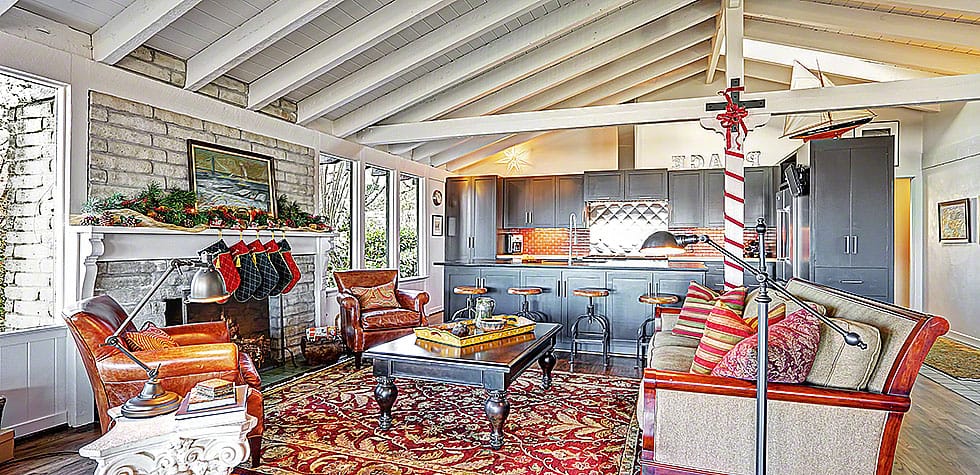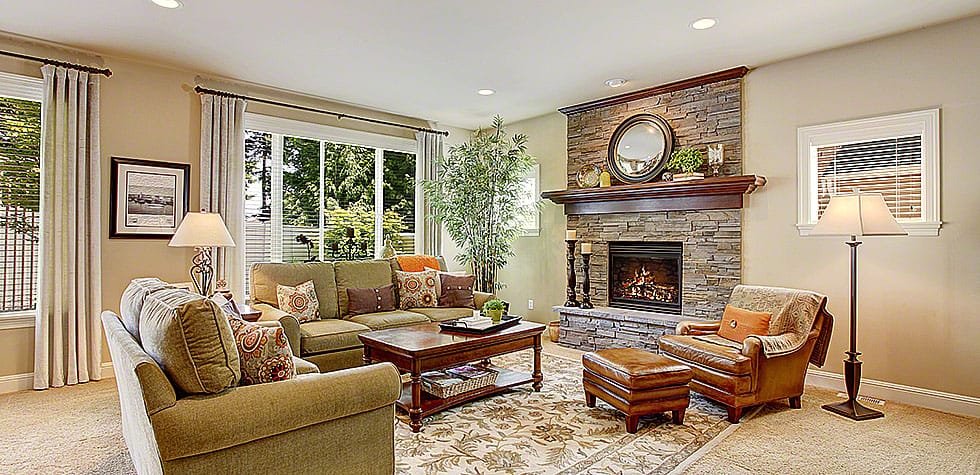
You may have heard the term traditional rug many times along with Persian rugs and antique rugs when buying a rug or talking to a rugs enthusiast Here is everything you should know about traditional rugs and how to choose a traditional area rug for your home.
What Are Traditional Rugs?
These are hand-knotted rugs made in Oriental countries like Iran, Turkey, India, Pakistan, China, Tibet, and others. Therefore, all Persian and Oriental rugs are also traditional rugs.
Hand-Knotted
Traditional rugs are never made with machines which is one of the reasons they appear sublime. There can be traditional rugs that are hand-tufted or machine-made, but a true traditional rug is hand-knotted.
Traditional rugs are hand-knotted by skilled weavers who weave each and every knot of the rug. The quality of these rugs is commonly determined by the number of knots per square inch of the rug. So, rugs that have a higher number of knots are more durable, appear better, and cost more.
As a weaver perform hand-knotting manually, the process takes a lot of time. On average, a weaver can tie approximately 10,000 knots in a day. Therefore, it’s common for a weaver to take months for the completion of only a single medium-sized rug. Additionally, if a rug is larger, it will take even more time.
Colors And Designs
The colors and designs of traditional colors are distinct and bold. You can easily tell traditional rugs apart from others from the colors and patterns. However, keep in mind that colors and patterns can be replicated and many machine-made rugs can have the same patterns, but they won’t be hand-knotted nor high-quality materials will be employed in machine-made rugs.
Back to the distinct colors and patterns of traditional rugs, the patterns and choice of colors change as you go from one Oriental country to the other. In some cases, you will see different patterns in different regions of the same country.
Elements like florals, borders, central medallions, and intricate patterns are common in traditional rugs. Moreover, Oriental area rugs usually have maroon, red, brown, navy blue, white, and green colors.
Cost
Many people wonder why the cost of traditional rugs is so high. It’s due to the time and dedication of the weavers who take months in perfecting their rugs. Moreover, if the patterns are complex, they will require more knots taking more time. Plus, they are made of high-quality wool, silk, or cotton which adds up to the cost.
How To Choose A Traditional Rug?
It’s easy to confuse a machine-made rug in traditional design with a genuine hand-knotted traditional rug. They may appear similar, but the difference between them is huge that impacts their durability, comfort level, and cost.
You should look for these things for spotting genuine traditional rugs.
Uniqueness
Traditional rugs are unique because they are hand-knotted and weaver can’t replicate even their own design exactly the same. This adds to the uniqueness and charm of traditional rugs. Moreover, the designs of traditional rugs are not replied mostly and one design won’t be available in different sizes.
On the other hand, the designs of machine-made rugs are on the computer and can be replicated as required. So, if you’re seeing the same design in different sizes, quantities, and materials, the rugs will be machine-made.
Symmetry
Generally, handmade rugs are never 100% symmetrical. The knots are dense and durable, but the shape is slightly uneven. They are made by expert artisans who take months for creating a single rug. So, the weaver can’t repeat the same details completely even on the same rug. It makes the traditional rugs more beautiful and unique.
If you check the shape and design of a traditional rug, you will notice that the design isn’t mirrored completely from one half to the other. On the other hand, machine-made rugs can replicate designs in 100% symmetry.
Fringes
Fringes are strands of rug material that are hanging a few inches out of the sewn ends of a rug. These fringes can show you if a rug is hand-knotted or machine-made.
In genuine traditional rugs that are hand-knotted, fringes are formed naturally in the process of rug making. They are the end of the warp thread that is used for weaving the rugs. So, fringes are an integral part of handmade rugs Virginia and they are not for decorative purposes. However, these fringes have become a part of the overall design and pattern of hand-knotted traditional rugs.
On the other hand, machine-made rugs have fringes sewn into them for decorative purposes and look like hand-knotted rugs. They attached after making the rug and the fringes are made of synthetic materials like nylon or polyester. So, the fringes should appear as an extension of the rug. If they look sewn and have a simple and uniform appearance, the rug is machine-made.
Knot Structure On The Back Of The Rug
An easy way to tell the difference between a machine-made and a hand-knotted traditional rug is by looking at the back of the rug.
Hand-knotted rugs will have knots that are slightly uneven. This is normal for rugs made by hand. However, if the knots are uniform and completely even, the rug is machine-made.
Materials
Hand-knotted traditional rugs are made of natural materials like sheep’s wool, cotton, and pure silk. There can be two different materials used on the surface and on the back.
Wool is commonly used on the surface (pile) of the hand-knotted rugs and the back (warp) is made of cotton. However, both can be made of sheep’s wool as well which can increase their cost. Moreover, if you go up the cost, there are also hand-knotted rugs made of genuine silk that have a beautiful sheen. Silk traditional rugs are hugely sought-after rugs and also some of the most expensive rugs due to the luxury and comfort they offer.
Due to the high-quality materials, hand-knotted traditional can last for decades and sometimes centuries. They can become a family heirloom. However, keep in mind that usually the most long-lasting traditional rugs are made of wool. Rugs made of silk are costly but they don’t last as long.
On the other hand, machine-made rugs are usually made of synthetic fibers like nylon, polypropene, polyester, and others. Even when a natural material like wool is used, it’s combined with synthetic materials, artificial dyes, and chemicals to keep the cost of the rug low.
Knot Density
Imagine knot density as image resolution. Just as image quality increases with more resolution, the same way the quality of a rug increases with higher knot density. Because more knots enable the weaver to include more details and designs.
However, high knot density increases the time it takes for a rug to complete, so rugs with high knot density are costlier than rugs with lower knot density even when both are handmade.
Pile Thickness
Pile thickness is the height of the rug. A hand-knotted rug that is thin has a higher value than thicker rugs. Some high-quality traditional rugs can be 3-6mm in thickness.
Conclusion
Traditional rugs are high-quality rugs that are hand-knotted and made of high-quality natural materials. When choosing traditional rugs Virginia, look for the materials, knot density, uniqueness, symmetry, and fringes.



